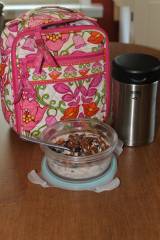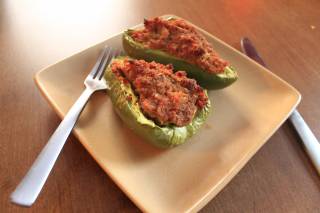
Are You Consuming More Sugar Than You Realize?
After writing the initial post, The Not So Sweet Sugar Reality, there was still more to say about how sugar sneaks into common foods that this topic deserved a follow up.
Before addressing how much sugar sneaks into our everyday foods, let’s put it into context.
How much sugar should we be consuming each day?
According to the American Heart Association and World Health Organization, the recommended amounts of daily sugar consumption are 5 % of total caloric intake or:
Less than 38 grams or 9 tsp per day for men
Less than 25 grams or 6 tsp per day for women
Less than 12-25 grams or 3-6 tsp per day for children depending on size and age
Yet, the average American consumes about 194 grams or 48.5 teaspoons of sugar per day!
How is so much sugar sneaking into our daily plates?
Below is a list of the amounts of sugar found in common foods:
12 oz can of coke = 39 g/9.3 tsp
8 oz cup of apple juice = 26 g/6.2 tsp
Yoplait yogurt = 27 g/6.4 tsp
1 Cups Raisin Bran = 19 g/4.5 tsp
3 Oreos = 13 g /3.1 tsp
AMP Energy Drink = 58 g/13.8 tsp
Starbucks Grande Peppermint Mocha Frappuccino = 65 g/15.6 tsp
Bottled Starbucks Frappuccino Coffee Drink = 46 g/11 tsp
1 Medium 3” Apple = 19 g/4.5 tsp
1 Medium 2.5” Nectarine = 11 g/2.6 tsp
1 Cup Whole Strawberries = 7g/1.7 tsp
Sugar is everywhere!
From this list you can see how common foods, even “health foods” are often loaded with sugar. For example, one Yoplait yogurt cup contains more sugar than an average size woman should eat in the whole day!
In fact, added sugar hides in 74% of processed foods. This is why it is important to get in the habit of reading ingredient labels to spot that extra added sugar. Look for words that end in “ose” (like lactose or sucrose), “tol” (like sorbitol), or ending in malt, juice, or syrup.
It is important to keep in mind that not all sugar is created equal.
The natural sugars found in vegetables and fruits are not as potent. These items also contain fiber, vitamins, minerals, enzymes, and beneficial phytonutrients which moderate the effects of sugar on the body. However, when the natural sugars in these foods, like beets, are separated from their water, vitamins, minerals, fiber, and other beneficial components, we are left with refined white crystals that we know as sugar.
What is the big problem with this refined sugar?
Besides all of the negative health affects (i.e. diabetes, heart disease, weight gain) that were addressed in the first post, The Not So Sweet Sugar Reality, sugar can be compared to drugs in the way that it affects the brain and body.
In animal studies, sugar causes cravings, tolerance, and withdrawal, similar to the effects of substance abuse. In one study, given the choice, rats chose sugar over cocaine because the high that they received from sugar was more pleasurable. In humans, sugar has a similar affect in the brain as addictive drugs leading to cravings and addiction.
What Can You Do About a Sugar Addiction?
A 21-day sugar detox can be a great start when you base it on consuming real, whole foods. This helps to eliminate sugar cravings and break that sugar addiction cycle. When we limit our sugar, we limit the blood sugar spikes and crashes that sugar causes. This has a significant impact on our cravings/
For a deeper look into breaking your sugar cravings and establishing healthy eating patterns for a lifetime, check out my 7 Weeks of Real Food program. In it you will receive the practical support to embrace healthy eating and the tools you need to be successful in your attempts.
Dr. Jamie
 My lunch today consisting of chicken vegetable stew in a thermos with plain, full fat yogurt topped with blueberries, pecans and cinnamon. Yum!It’s that time of year again folks! I cannot believe it, but Facebook does not lie. I saw all of the pictures the last few days of everyone’s very cute kids in their first day of school outfits. You know what that means…It’s time to get back into the fall routine of packing healthy lunches for the kids (and grown up kids)!
My lunch today consisting of chicken vegetable stew in a thermos with plain, full fat yogurt topped with blueberries, pecans and cinnamon. Yum!It’s that time of year again folks! I cannot believe it, but Facebook does not lie. I saw all of the pictures the last few days of everyone’s very cute kids in their first day of school outfits. You know what that means…It’s time to get back into the fall routine of packing healthy lunches for the kids (and grown up kids)!
Focus on nutrient dense, REAL foods!
Fill lunch boxes with quality fats and proteins to maintain energy and focus throughout the afternoon. Resist the temptation to send typical lunch foods that are refined and processed (i.e. bread, crackers, chips, cookies, pop, juice boxes, candy, etc). These convenient foods might be easy to grab and stick in the lunch box, but the high sugar and carbohydrate levels cause blood sugar to spike after lunch and soon come crashing down. This can cause your student to lose energy and focus and be ready for a nap before the afternoon is over On the other hand, a lunch with more fat and protein keeps blood sugar even, keeping your student satisfied and engaged all afternoon.
Some of our favorite nourishing lunches include:
Chicken salad, celery with nut butter, and a few slices of high quality cheese
Two Hard boiled eggs, cornbread muffins smeared with real butter, and a mashed avocado (guacamole) with bell pepper slices
Homemade soup in a thermos, plain yogurt topped with blueberries, nuts, and cinnamon (See picture)
Lettuce wraps with ham, cheese and avocado slices, handful of nuts with unsweetened dried fruit (easy trail mix), and applesauce
Below are lunch box friendly ideas to nourish your family and keep everyone satiated and satisfied until dinner time!
- Wrap a nitrate/nitrite free lunch meat (Applegate Farms) around slices of avocado
- Breadless sandwiches! Check out these ideas for 15 breadless sandwiches: no bread sandwich ideas
- Homemade soup or leftovers in a thermos
- Chicken, tuna, or egg salad made with homemade mayo
- Salad with homemade oil and vinegar or ranch dressing (easy to make from homemade mayo)
- Guacamole with veggies
- Hard boiled eggs
- Lettuce Wraps
- Handful of nuts
- Unsweetened dried fruit
- Homemade fruit and nut bars
- Homemade muffins (Freeze well) – These are a few favorites: cornbread muffins and banana muffins
- Good quality cheese, preferably from pastured cows
- Unsweetened, Plain, Full Fat Yogurt or kefir
- Apple or celery w/ nut butter
- Unsweetened applesauce - This is easy to make in a crockpot: crockpot applesauce
- Beef Jerky (make your own if you have a dehydrator!)
- Smoked salmon
- Homemade fruit snacks
- Coconut bombs
Remember that transitioning to a real food diet may not happen overnight.
If you aren’t at the point of making your own mayo and ranch dressing that is okay. Do what you can do and keep moving in the direction of eating real foods! The important thing that I want everyone to realize is that many of the “modern convenience foods” aren’t that difficult to make on your own. The real ingredients that you will add will be much better for you than the ingredients used in the processed foods in the middle aisles of the grocery stores!
A couple of tips to help:
Set aside a couple hours each week to prep lunch items (i.e. cut veggies, make a big batch of soup or chicken salad, make and freeze muffins, etc) will make it easy when trying to get everyone out the door in the morning!
Involve your kids in the process by encouraging them to help make, choose, and pack their lunch with you!
Looking for more resources and encouragement to nourish yourself and your family? Sign up for our RESTART class beginning in just a couple of weeks!
Backpack Ergonomics
One of the topics I am commonly asked about this time of year is about backpack ergonomics. On the left, straps are loose, so backpack hangs low, resulting in an an arch in the lower back and forward posture. On the right, the straps are tighter, and posture is better.
On the left, straps are loose, so backpack hangs low, resulting in an an arch in the lower back and forward posture. On the right, the straps are tighter, and posture is better.
How much weight is too much to carry in a backpack? Are there right and wrong ways to carry a backpack?
I have compiled a quick list of my top backpack tips for you. While we mostly think of kids going to school, these rules also apply to adults as well, so keep them in mind for the next time you carry your laptop or travel somewhere with your gear.
- Use both straps on the backpack.
- Wearing the backpack over just 1 shoulder (especially the same shoulder repeatedly), will cause the body to shift as it compensates, and lead to various muscles groups becoming weaker, and others becoming tighter.
- Use the chest buckle or waist strap.
- The extra buckle provides more support and distributes the weight better.
- Don't overload the backpack.
- Backpack weight should be less than 10-15% of the bodyweight of the person carrying the backpack.
- Buy backpack that is lightweight and padded.
- Canvas is lighter than leather. Thick padded straps distribute the weight. Padding in the lower back redistributes weight and takes pressure off the neck and shoulders.
- Put heaviest items closest to your body.
- This puts the heavy items closer to your center of gravity. The backpack will feel lighter.
- Keep the straps tight.
- This keeps the backpack close to your body. Loose straps and holding the backpack further from your body puts more load on your neck and shoulders.
Remember that that wearing a backpack should not cause discomfort.
If your child complains about back, neck, or shoulder pain, try making these simple modifications. If they still have discomfort, give us a call. Pain, especially in kids, is not a normal “back to school symptom”, and should be taken care of as quickly as possible. The great thing about kids is that their bodies typically respond quickly to treatment.
 Sugar consumption has increased dramatically, causing unwanted health consequences.
Sugar consumption has increased dramatically, causing unwanted health consequences.
In 1700 the average consumption of sugar was 4 lbs. per person per year. By 1900 sugar consumption was up to 90 lbs. per person per year. Today, according to the USDA the average person consumes a whopping 156 lbs. of sugar per year!
Are you consuming more sugar than you realize?
Unfortunately, the selection in grocery stores today makes it nearly impossible to avoid sugar.
Sugar is not just found in sugary desserts like ice cream and doughnuts, but now food producers sneak it into almost all foods including salad dressing, granola bars, protein powders, canned fruits and vegetables, and many seemingly “health” foods. When we eat food high in refined carbohydrates and sugar, the blood sugar response in the body makes us crave it more.
This leads to a vicious sugar cycle.
Why is this such a problem?
The overconsumption of sugar wreaks havoc on the systems of the body.
-
Sugar contains no nutrients. When sugary food is on our plates, we remove nutrient dense food. This leaves the body lacking in essential nutrients necessary to health.
-
Sugar creates unbalanced gut bacteria, which is home to 70-80% of our immune system.
-
Sugar stresses your hormonal system causing adrenal fatigue, thyroid conditions, and other hormonal symptoms.
-
Sugar causes an inflammatory response in the body. This inflammation leads to a host of other conditions listed below. When the body is chronically inflamed, it suppresses the immune system leaving you vulnerable to infection and disease.
Too much sugar has undesired consequences - problems that you may not realize are caused by the sugar.
Common conditions associated with sugar consumption include:
- Migraines
- High Blood Pressure
- Heart Disease
- Body aches and joint problems
- Arthritis
- Autoimmune Conditions
- Leaky gut
- Diabetes
- Irritable Bowel Syndrome (IBS)
- Cancer
Want to stop the vicious sugar cycle?
Here are some tips to help you reduce your sugar intake and beat those sugar cravings.
- Drink some water when you crave sugar. You may just be dehydrated!
- Focus on consuming meals higher in fat and protein.
- Start reading labels so you notice the hidden sugar.
- When you feel like eating something sweet, distract yourself by doing something else. Some ideas include going for a walk, calling a friend, taking a nap, or reading a book.
- Write about your motivations for reducing sugar and keep a food journal. This will keep you motivated!
- Cinnamon! Cinnamon regulates your blood sugar after meals.
- Drink some spiced tea or mint-flavored water (no added sugar) for a sense of sweetness without actually consuming sugar.
- Join us for 7 Weeks of Real Food where we will learn together to eat REAL food for REAL changes.
Let me know if you are limiting your sugar intake and tell me how you are doing that. I'd love to hear about it!
Dr. Jamie






 Sugar consumption has increased dramatically, causing unwanted health consequences.
Sugar consumption has increased dramatically, causing unwanted health consequences.